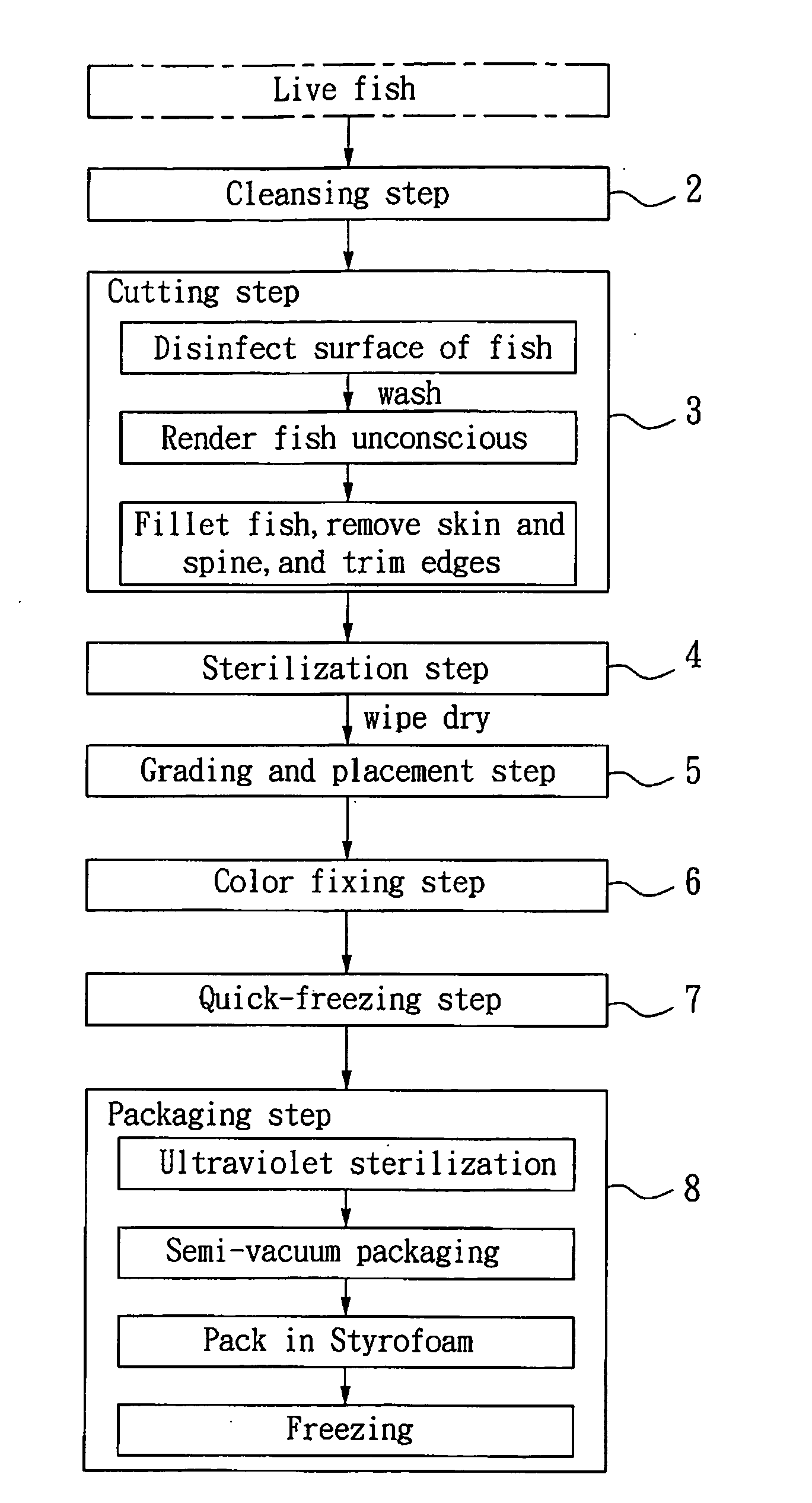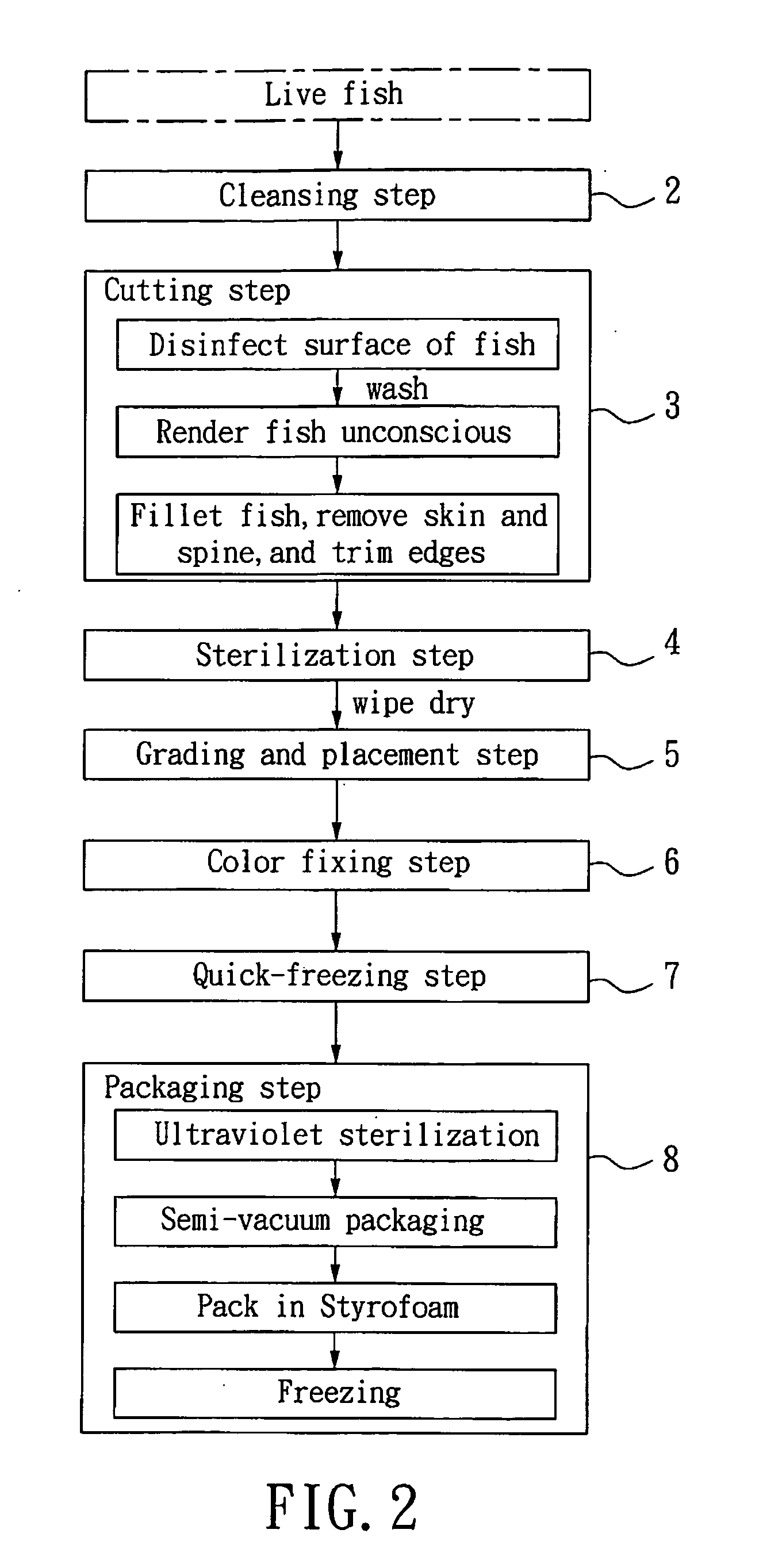Method of producing fish meat having fresh color
a technology of fish meat and color, applied in the field of preserving fish, can solve the problems of fish meat tissues being susceptible to bacterial decomposition, affecting the color of fish, and likely to decay, and achieve the effect of prolonging the processing time and reducing the degradation of fish protein
- Summary
- Abstract
- Description
- Claims
- Application Information
AI Technical Summary
Benefits of technology
Problems solved by technology
Method used
Image
Examples
Embodiment Construction
[0030]Referring to FIG. 2, the preferred embodiment of a method of producing fish meat having fresh color according to the present invention is shown to include a cleansing step 2, a cutting step 3, a sterilizing step 4, a grading and placement step 5, a color fixing step 6, a quick-freezing step 7, and a packaging step 8.
[0031]In the cleansing step 2, a live fish to be processed is moved to a fish tank containing clean water, and is kept there for at least 12 hours to allow the fish to discharge most of the excremental wastes in its body into the fish tank.
[0032]In the cutting step 3, the cleansed live fish is first subjected to a surface disinfecting treatment by immersing the live fish in a solution containing sodium hypochlorite or chlorite so as to disinfect the surface of the fish. Sodium hypochlorite is commonly referred to as a bleaching agent, which can destroy protein of microorganisms to thereby kill bacteria, fungi and viruses. Chlorite is a highly effective oxidizing ag...
PUM
 Login to View More
Login to View More Abstract
Description
Claims
Application Information
 Login to View More
Login to View More - R&D
- Intellectual Property
- Life Sciences
- Materials
- Tech Scout
- Unparalleled Data Quality
- Higher Quality Content
- 60% Fewer Hallucinations
Browse by: Latest US Patents, China's latest patents, Technical Efficacy Thesaurus, Application Domain, Technology Topic, Popular Technical Reports.
© 2025 PatSnap. All rights reserved.Legal|Privacy policy|Modern Slavery Act Transparency Statement|Sitemap|About US| Contact US: help@patsnap.com



